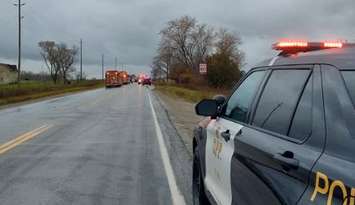The Lifesaving Society of Ontario is urging everyone to be aware of the risks of drowning during their annual National Drowning Prevention Week.
From July 21-27, the Lifesaving Society will be blasting out information with a goal of making everyone more safe near the water. Stephanie Bakalar, Corporate Communications Manager with Lifesaving Society Ontario, says obviously fatal drownings are tragic, but non-fatal drownings can also be dangerous.
"What's really important here is that the outcomes can be very severe. Due to lack of oxygen, you could have lifelong, debilitating health problems," Bakalar explained.
Bakalar says prevention of fatal and non-fatal drownings, which can still cause long-term health effects, comes down to wearing lifejackets a lot of the time, especially on boats or watercraft.
"A lot of people use them as a cushion and they sit on them and they think 'Meh, I don't need to put it on.' I want them to think of it the same way you think of a seatbelt in your car. If you get into a car accident, you don't try to put your seatbelt on after you've been in the accident. You will not be able to find your lifejacket to put it on once you've been thrwon from a boat," Bakalar stated bluntly.
On top of wearing lifejackets on boats and watercraft, there's another place you should have them.
"Get those lifejackets on and absolutely take them to the beach with you. They're a great safety measure. If you get to the beach and the waves are a little rough and you still wanna cool off, that lifejacket's gonna be a great layer of protection for you," said Bakalar.
The Lifesaving Society offers courses on how to swim, how to save someone who's drowning and proper first aid measures. More information can be found at watersmartparents.ca.
According to data from the Lifesaving Society of Ontario, during the years 2012–2021, 2,541 children attended an emergency department and 503 were hospitalized due to non-fatal drowning.
“At its mildest level you might see your child coughing. As the impairment becomes more severe, your child may have sustained difficulty breathing and be disoriented or confused. In the most severe form of non-fatal drowning, your child could be unconscious or non-breathing and require resuscitation. Parents should react to non-fatal drowning right away, as even mild cases can cause future issues,” stressed Bakalar. “Anyone who experiences involuntary, distressed coughing, or difficulty breathing as a result of a non-fatal drowning should be seen by a physician.”
The Ontario Non-Fatal Drowning Report, 2023 shows that non-fatal drowning impacts children at higher rates than any other age group. Non-fatal drowning incidents among children most commonly occurred in pools followed by during boating.






